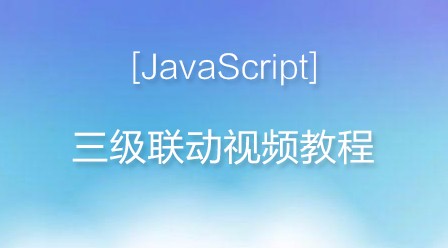Java ThreadPoolExecutor的参数深入理解
一、使用Executors创建线程池
之前创建线程的时候都是用的Executors的newFixedThreadPool(),newSingleThreadExecutor(),newCachedThreadPool()这三个方法。当然Executors也是用不同的参数去new ThreadPoolExecutor
1. newFixedThreadPool()
创建线程数固定大小的线程池。 由于使用了LinkedBlockingQueue所以maximumPoolSize 没用,当corePoolSize满了之后就加入到LinkedBlockingQueue队列中。每当某个线程执行完成之后就从LinkedBlockingQueue队列中取一个。所以这个是创建固定大小的线程池。
public static ExecutorService newFixedThreadPool(int nThreads) {
return new ThreadPoolExecutor(nThreads, nThreads,
0L, TimeUnit.MILLISECONDS,
new LinkedBlockingQueue<Runnable>());
}
public ThreadPoolExecutor(int corePoolSize,
int maximumPoolSize,
long keepAliveTime,
TimeUnit unit,
BlockingQueue<Runnable> workQueue) {
this(corePoolSize, maximumPoolSize, keepAliveTime, unit, workQueue,
Executors.defaultThreadFactory(), defaultHandler);
}2.newSingleThreadPool()
创建线程数为1的线程池,由于使用了LinkedBlockingQueue所以maximumPoolSize 没用,corePoolSize为1表示线程数大小为1,满了就放入队列中,执行完了就从队列取一个。
public static ExecutorService newSingleThreadExecutor() {
return new FinalizableDelegatedExecutorService
(new ThreadPoolExecutor(1, 1,
0L, TimeUnit.MILLISECONDS,
new LinkedBlockingQueue<Runnable>()));
}3.newCachedThreadPool()
创建可缓冲的线程池。没有大小限制。由于corePoolSize为0所以任务会放入SynchronousQueue队列中,SynchronousQueue只能存放大小为1,所以会立刻新起线程,由于maxumumPoolSize为Integer.MAX_VALUE所以可以认为大小为2147483647。受内存大小限制。
public static ExecutorService newCachedThreadPool() {
return new ThreadPoolExecutor(0, Integer.MAX_VALUE,
60L, TimeUnit.SECONDS,
new SynchronousQueue<Runnable>());
}
public ThreadPoolExecutor(int corePoolSize,
int maximumPoolSize,
long keepAliveTime,
TimeUnit unit,
BlockingQueue<Runnable> workQueue) {
this(corePoolSize, maximumPoolSize, keepAliveTime, unit, workQueue,
Executors.defaultThreadFactory(), defaultHandler);
}二、使用ThreadPoolExecutor创建线程池
ThreadPoolExecutor的构造函数
public ThreadPoolExecutor(int corePoolSize,
int maximumPoolSize,
long keepAliveTime,
TimeUnit unit,
BlockingQueue<Runnable> workQueue,
ThreadFactory threadFactory,
RejectedExecutionHandler handler) {
if (corePoolSize < 0 ||
maximumPoolSize <= 0 ||
maximumPoolSize < corePoolSize ||
keepAliveTime < 0)
throw new IllegalArgumentException();
if (workQueue == null || threadFactory == null || handler == null)
throw new NullPointerException();
this.corePoolSize = corePoolSize;
this.maximumPoolSize = maximumPoolSize;
this.workQueue = workQueue;
this.keepAliveTime = unit.toNanos(keepAliveTime);
this.threadFactory = threadFactory;
this.handler = handler;
}参数:
1、corePoolSize核心线程数大小,当线程数<corePoolSize ,会创建线程执行runnable
2、maximumPoolSize 最大线程数, 当线程数 >= corePoolSize的时候,会把runnable放入workQueue中
3、keepAliveTime 保持存活时间,当线程数大于corePoolSize的空闲线程能保持的最大时间。
4、unit 时间单位
5、workQueue 保存任务的阻塞队列
6、threadFactory 创建线程的工厂
7、handler 拒绝策略
任务执行顺序:
1、当线程数小于corePoolSize时,创建线程执行任务。
2、当线程数大于等于corePoolSize并且workQueue没有满时,放入workQueue中
3、线程数大于等于corePoolSize并且当workQueue满时,新任务新建线程运行,线程总数要小于maximumPoolSize
4、当线程总数等于maximumPoolSize并且workQueue满了的时候执行handler的rejectedExecution。也就是拒绝策略。
ThreadPoolExecutor默认有四个拒绝策略:
1、ThreadPoolExecutor.AbortPolicy() 直接抛出异常RejectedExecutionException
2、ThreadPoolExecutor.CallerRunsPolicy() 直接调用run方法并且阻塞执行
3、ThreadPoolExecutor.DiscardPolicy() 直接丢弃后来的任务
4、ThreadPoolExecutor.DiscardOldestPolicy() 丢弃在队列中队首的任务
当然可以自己继承RejectedExecutionHandler来写拒绝策略.
int corePoolSize = 1;
int maximumPoolSize = 2;
int keepAliveTime = 10;
// BlockingQueue<Runnable> workQueue = new LinkedBlockingQueue<Runnable>();
BlockingQueue<Runnable> workQueue = new ArrayBlockingQueue<Runnable>(5);
ThreadFactory threadFactory = Executors.defaultThreadFactory();
//线程池和队列满了之后的处理方式
//1.跑出异常
RejectedExecutionHandler handler = new ThreadPoolExecutor.AbortPolicy();
RejectedExecutionHandler handler2 = new ThreadPoolExecutor.CallerRunsPolicy();
RejectedExecutionHandler handler3 = new ThreadPoolExecutor.DiscardPolicy();
RejectedExecutionHandler handler4 = new ThreadPoolExecutor.DiscardOldestPolicy();
ThreadPoolExecutor threadPoolExecutor = new ThreadPoolExecutor(corePoolSize, maximumPoolSize, keepAliveTime,
TimeUnit.SECONDS, workQueue, threadFactory, handler2);
for (int j = 1; j < 15; j++) {
threadPoolExecutor.execute(new Runnable() {
public void run() {
try {
System.out.println(Thread.currentThread().getName());
TimeUnit.SECONDS.sleep(1);
} catch (InterruptedException e) {
e.printStackTrace();
}
}
});
}
System.out.println(threadPoolExecutor);
}以上就是深入理解Java ThreadPoolExecutor参数的示例代码分析的详细内容,更多请关注php中文网其它相关文章!



















